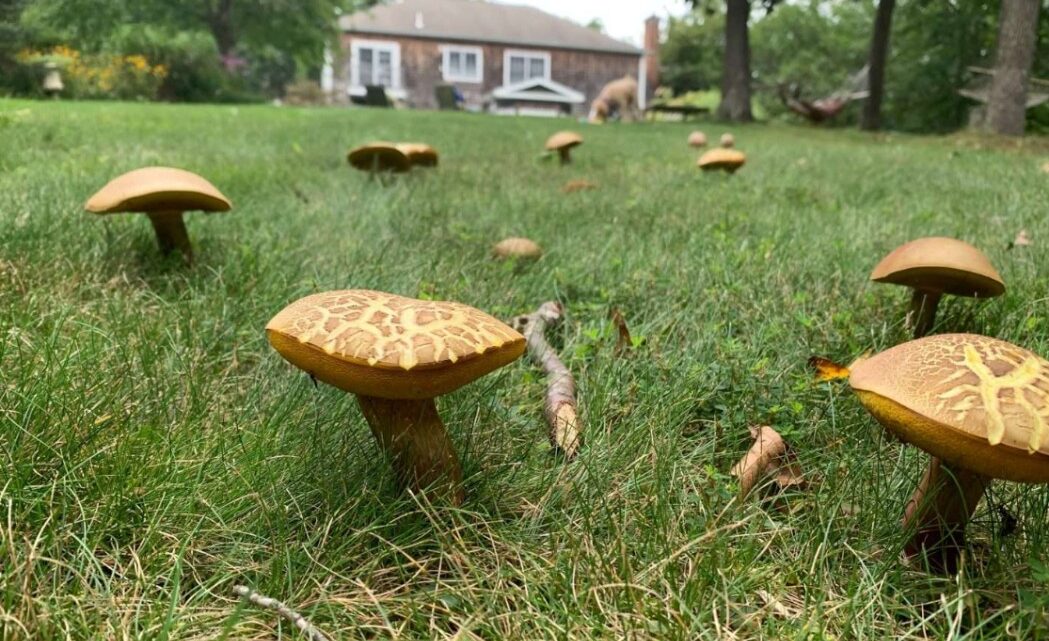
How to Grow Mushrooms in Your Home Garden
October 18, 2024Growing your own mushrooms at home can seem like a difficult procedure that’s entirely different from regular gardening. Unlike conventional vegetables, mushrooms have special requirements. Given the right care, they will flourish in your backyard.
Growing mushrooms yourself is a fun and sustainable way to enjoy fresh organic food, whether your interests are in gardening passionately or just adding some unusual taste to your meals.
Is it difficult to grow mushrooms in your home garden? Let’s explore their world, from selecting the correct types to creating the ideal growth conditions.
Understanding Mushrooms and Their Growing Requirements
First of all, you should know why mushrooms differ from other plants in your yard. Mushrooms are fungi, thus they grow from seeds other than those of crops or flowers.
Rather, they spread from spores, which are tiny dust-like particles that need demanding circumstances to germinate and develop. Unlike green plants, mushrooms are perfect for shaded areas of your garden as they grow in dark, chilly, and humid conditions. They do not require sunshine to photosynthesise.
A mushroom consists of a fruiting body, which is the part we see and harvest, and the mycelium, which is the root-like network growing beneath the ground.
The primary part of the mushroom is the mycelium, as it draws nutrients from compost, straw, or wood. This is why effective cultivation depends on supplying the correct substrate.
Choosing the Right Mushroom Variety
Choosing the different types you wish to grow comes first when cultivating mushrooms.
Since not all mushrooms are appropriate for outdoor gardens, it’s crucial to pick one that fits your local temperature and available growth environment.
Oyster mushrooms are beginner-friendly. They grow happily on common substrates and have a delicate nutty taste that’s easy on the palate. Just throw a bunch of spores on straw, sawdust, or even coffee grounds. Also, make sure to place them in a cool place.
Another excellent choice is shiitakes, which have a deep savoury taste. Usually growing on hardwood logs or sawdust, they are highly rewarding, but demand a little more patience. Perfect for spring and autumn growing, shiitakes like a somewhat warmer atmosphere than oysters.
You can also try portobello mushrooms, also called button mushrooms or white mushrooms. They favour cool, dark surroundings like a shaded part of your garden or even basements. Use composted manure or straw for best results.
Selecting the right type of mushroom will dictate the details of the growth process. Take into account your individual preferences, the local environment, and the available space.
Preparing the Growing Medium
First things first. Choose the type of mushroom that’s suitable for your garden, and then you can move on to preparing a matching growing medium.
Here’s something interesting about mushrooms: each one needs a different substrate to grow. Some of the substrates are common house materials, while others are found primarily at commercial stores.
Straw is among the common materials, and it’s perfect for oyster mushrooms. Pasteurise it before use to get rid of any germs or mould that could damage the mushroom. To that end, cut the straw into small pieces and soak it in hot water for about an hour. That should do.
As for shiitake mushrooms, the best substrate is a hardwood log, like oak, maple, or beech. Drill some holes into the log, then carefully pour the mushroom spawn inside them.
Portobello mushrooms have their own preferences as well and they have a huge affinity for composted manure. You can make it at home by combining animal dung and hay, but if that’s not available, just buy the readymade products. In either case, make sure that the compost is free from pathogens.
A successful harvest depends on your mushrooms having a clean nutrient-rich habitat to colonise, which is ensured by prepping the substrate properly.
Inoculating the Substrate
This refers to the procedure of adding mushroom spawn to your substrate once it has been prepared.
To ensure optimal spawn-substratum interaction for straw-based substrates, such as those utilised for oyster mushrooms, disperse the mushroom spawn uniformly throughout the straw.
Stuff the straw and spawn combination into a bucket or plastic bag with holes to ensure air circulation. This arrangement creates ideal conditions for mycelium growth.
To keep contaminants out when growing shiitakes on logs, insert the spawn into the drilled holes and seal them with wax. This promotes the mycelium’s complete colonisation of the wood.
To cultivate button mushrooms, distribute the spawn equally over the compost’s surface and gently stir it in.
It’s time to let the mycelium do its work after inoculation. Put the inoculated substrate somewhere cold and dark, such as a shed, a cellar, or a shady area of your yard.
The process of colonising the substrate can take many weeks, depending on the kind of mushroom and the growing environment.
Creating the Right Growing Conditions
Regarding optimal conditions, mushrooms require a careful combination of humidity, temperature, and ventilation.
Most mushrooms enjoy a temperature range of 15 to 20°C (59–68°F). Keeping the garden’s humidity high is crucial since mushrooms grow out of moisture.
If you are growing your mushrooms outside, ensure they are shielded from direct sunshine and drying breezes.
Regular misting helps to maintain the right moisture levels in the development zone. However, be careful not to oversaturate the substrate. Too much water promotes the growth of bacteria or mould.
Make sure your mushrooms are in a well-ventilated environment to avoid stale air and its aggravating problems. Good air circulation is absolutely necessary for proper cultivation.
Monitor your growing conditions closely since changes in temperature, severe dryness, or too much light can all affect mushroom development. Maintaining the correct conditions regularly is vital–hence, a little extra time will pay off in terms of a bountiful and healthy harvest.
Harvesting Your Mushrooms
The most fulfilling part of the process, which starts following weeks of painstaking observation, is reaping.
When your mushrooms reach the ideal size, usually when the caps are completely opened, but not yet curled upward, they are ready for picking.
Watch your mushroom garden closely during this sensitive phase. If you harvest them too early or too late, the taste and texture will be affected. When the time comes, reap the mushrooms using a sharp knife or twist them gently at the base. Refrain from using force as that will affect the subsequent crops.
You can enjoy numerous rounds of harvesting from a single batch of mushrooms because most of them will continue to grow for several weeks, sometimes generating multiple flushes.
Freshly plucked mushrooms have an amazing flavour and firm texture that’s unmatched by anything you’d see in a supermarket. You also get the added satisfaction of knowing that they are free from pesticides or other harmful chemicals.
Troubleshooting Common Mushroom Growing Issues
Mushrooms have a reputation for being difficult crops, so is that true?
Growing mushrooms can be a tad unpredictable, and even experienced gardeners have a few snags along the road. There are some common problems to watch out for.
The largest problem is contamination, as unfavourable conditions can quickly lead to an infestation of germs and mould in a batch. It is advisable to throw out the offending batch and start over if you detect odd colours or unpleasant odours.
Slow or stunted development is another frequent problem, which is frequently brought on by improper temperature, inadequate ventilation, or insufficient moisture.
These issues are typically fixable by modifying the growth environment, so don’t be afraid to experiment until you find the ideal conditions for your setup.
Since growing mushrooms can be unpredictable and slow at times, patience is absolutely vital. If you persevere, you will discover what thrives in your garden and produce even more abundant crops going forward.
Conclusion
Though mushroom gardens require some more care than your usual vegetables, the result is most definitely worth the additional effort.
By choosing the right variety, preparing a suitable substrate, and maintaining the best possible growing conditions, you can create the perfect mushroom garden right in your backyard.
You can also get extra help from a specialised gardening service for the best results.







